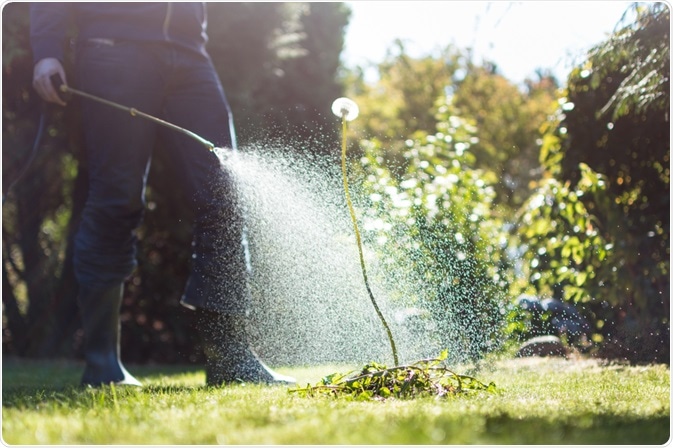
U.S. States that Use the Most (and Least) Glyphosate
The damaging effects of glyphosate-containing herbicides on humans, animals and the environment have been widely studied for several decades. In an effort to better quantify how specific amounts of glyphosate correlate with certain diseases, it is imperative to evaluate exactly how this harmful pesticide is used in various regions around the world.
Skip to:
- Why is it important to understand where glyphosate is being used?
- Which crops are typically treated with glyphosate?
- Glyphosate use in the U.S.
- Which U.S. states use the most glyphosate?
- Which U.S. states use the least glyphosate?
 FrankHH | Shutterstock
FrankHH | ShutterstockWhy is it important to understand where glyphosate is being used?
When toxicologists are evaluating the health effects of a specific pesticide, it is essential that they know exactly how much of the pesticide is being used in each region on a given crop. Furthermore, the timing and method of pesticide application, as well as the specific formulation of the pesticide, also contribute to evaluating these toxicological studies.
As crops have evolved to become more tolerant, and even resistant, to the application of broad-spectrum glyphosate, farmers have often relied on increasing the amount and frequency of glyphosate spraying. In 1974, farmers and ranchers in the United States applied an estimated 0.36 million kilograms of active glyphosate. By the year 2014, this number increased by 300-fold to reach up to 113.4 million kilograms.
Which crops are typically treated with glyphosate?
The active ingredient of glyphosate is typically applied to soybeans, corn, cotton, wheat, alfalfa, sorghum, sugar beets, canola, oranges, barley, and several other crops.
Glyphosate use in the U.S.
From 1990 to 2014, the total number of crops that were directly exposed to glyphosate in the United States increased from about 7.7 million pounds to approximately 250 million pounds.
Some of the most significant factors that have contributed to a rise in glyphosate use in the U.S. include:
- the continuous expansion in the number of crops registered for use of glyphosate product labels,
- the adoption of no-tillage and conservation tillage systems,
- the emergence of new pesticide application and timing methods,
- and the increased commercialization of genetically engineered herbicide-tolerant (GE-HT) crops.
Which U.S. states use the most glyphosate?
It is not surprising that the states that are more predominantly agricultural, such as California, Washington, and Illinois, have the highest levels of pesticide use. More specifically, the states that use the largest amounts of glyphosate include Illinois, Iowa, Nebraska, Kansas, North Dakota, Minnesota, South Dakota, Texas, Indiana and Missouri.
In fact, states such as Montana and South Dakota rely on glyphosate for more than 50% of their total pesticide usage. Since glyphosate is most commonly used for the treatment of soybeans and corn crops, it is not surprising that these crops are more commonly grown in the mid-western geography and Great Plains of the U.S.
Which U.S. states use the least glyphosate?
In the U.S., states such as Rhode Island, New Hampshire, Connecticut, Vermont, and Massachusetts, each of which is predominantly located in the northeastern part of the country, are associated with the lowest levels of pesticide use. Subsequently, these same states are also associated with the least amount of glyphosate use in America.
To date, various states have taken important measures to restrict or ban the use of glyphosate. For example, in 2017, California became the first state to issue a warning on glyphosate by list this pesticide as a probable carcinogen.
Colorado has also banned the use of glyphosate in public recreational parks, whereas many towns in Connecticut have adopted bans or restrictions of glyphosate use, particularly when used in areas surrounding elementary schools.
Sources:
- Benbrook C. M. (2016). Trends in glyphosate herbicide use in the United States and globally. Environmental Sciences Europe, 28(1), 3. DOI:10.1186/s12302-016-0070-0.
- The Places in America that Use the Most (and Least) Glyphosate – And What to Do About It. Weed Killer Crisis. weedkillercrisis.com
- Texas Organic Research Center. Glyphosate – Where is it restricted or banned in the United States? texasorganicresearchcenter.org
Last Updated: May 9, 2019























.png)











No hay comentarios:
Publicar un comentario